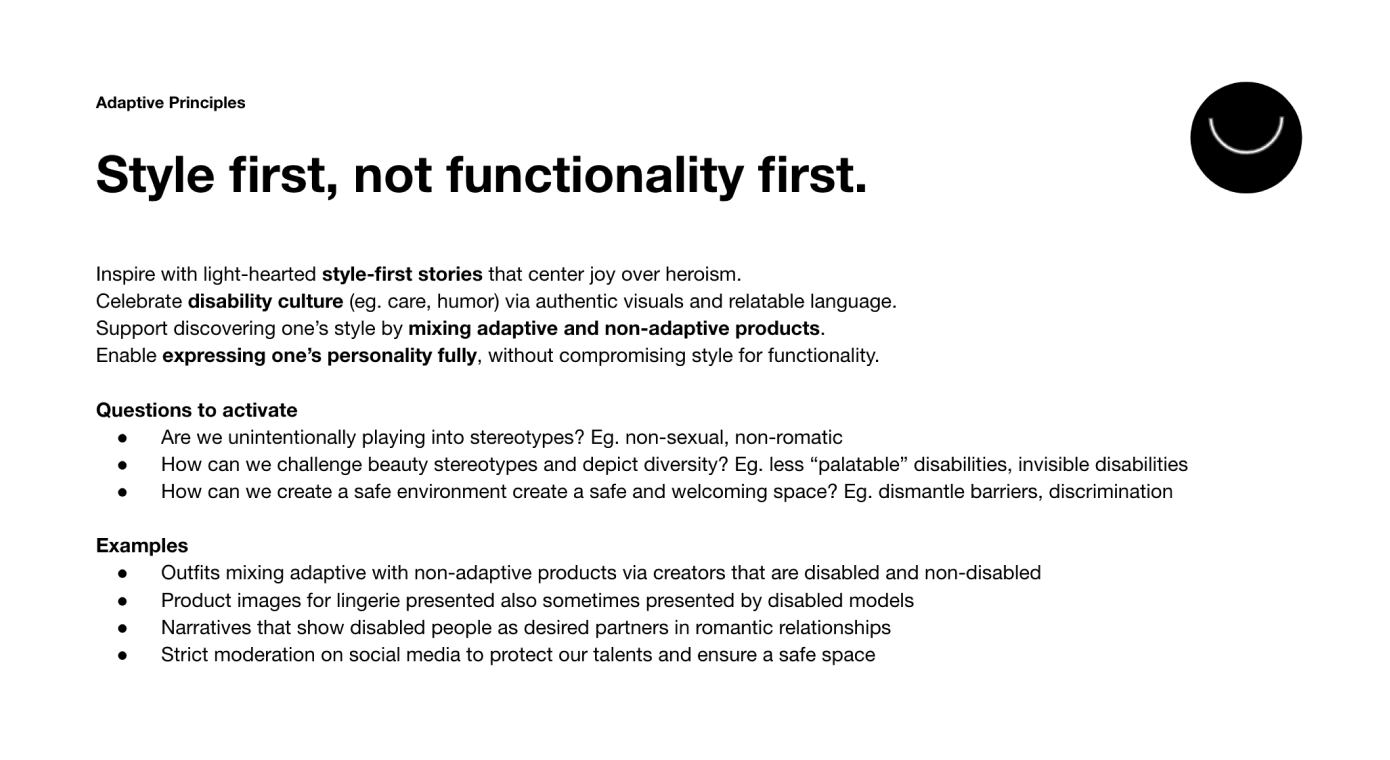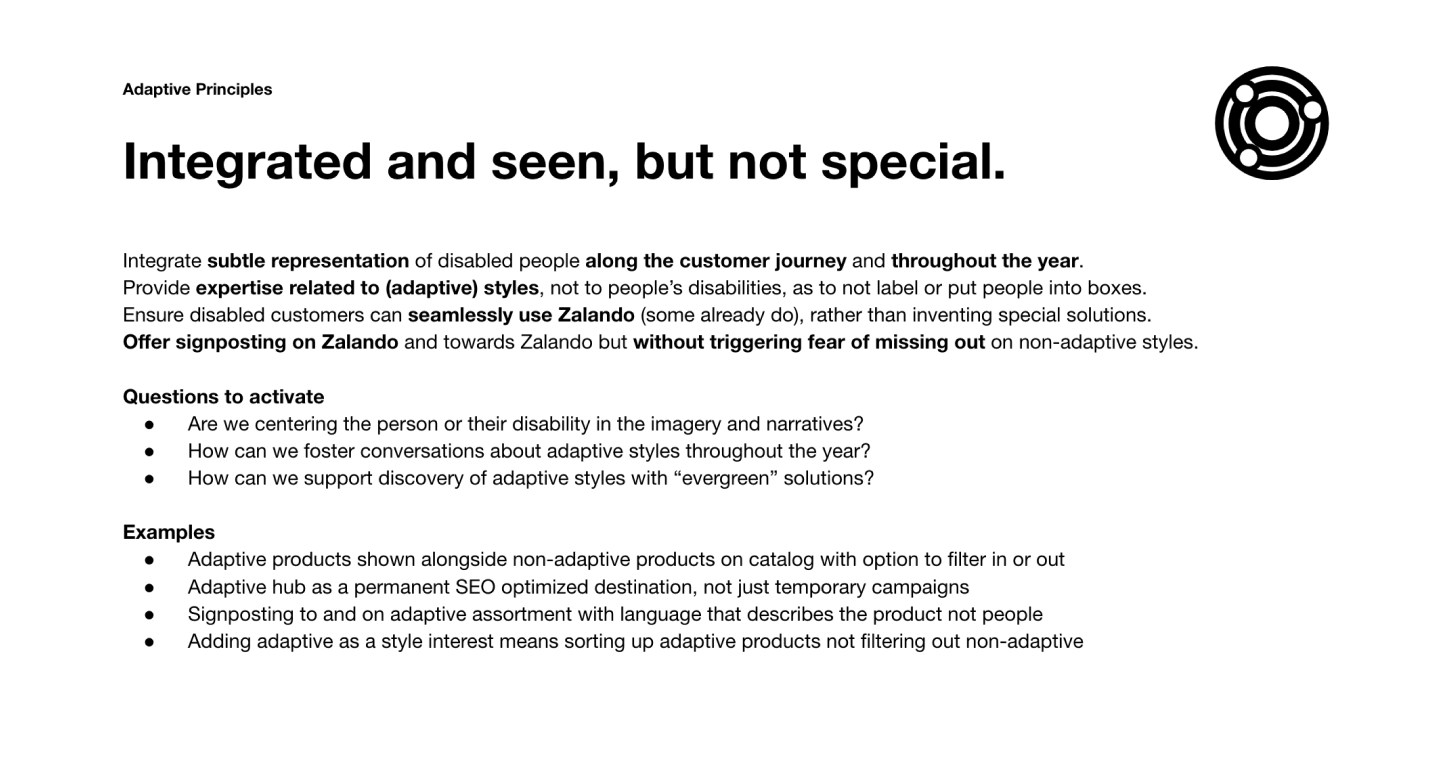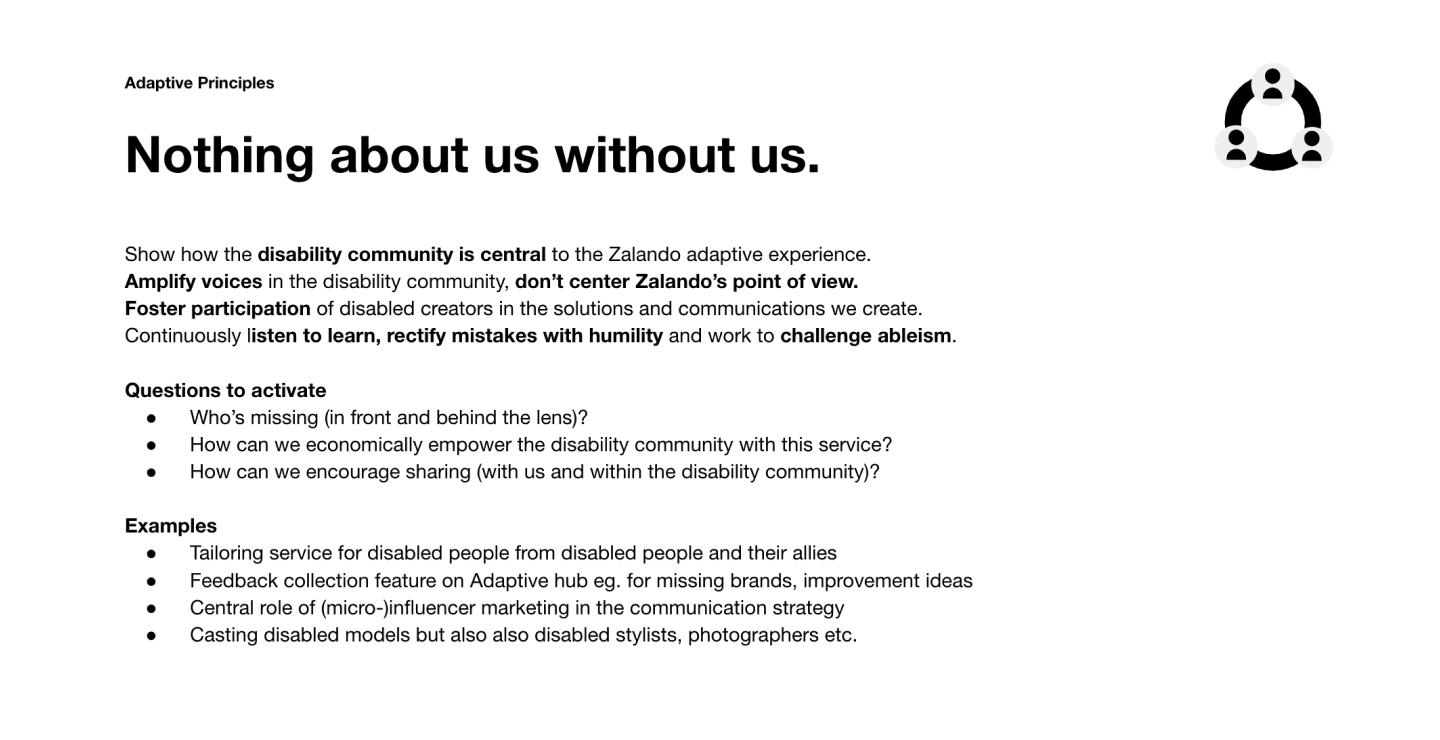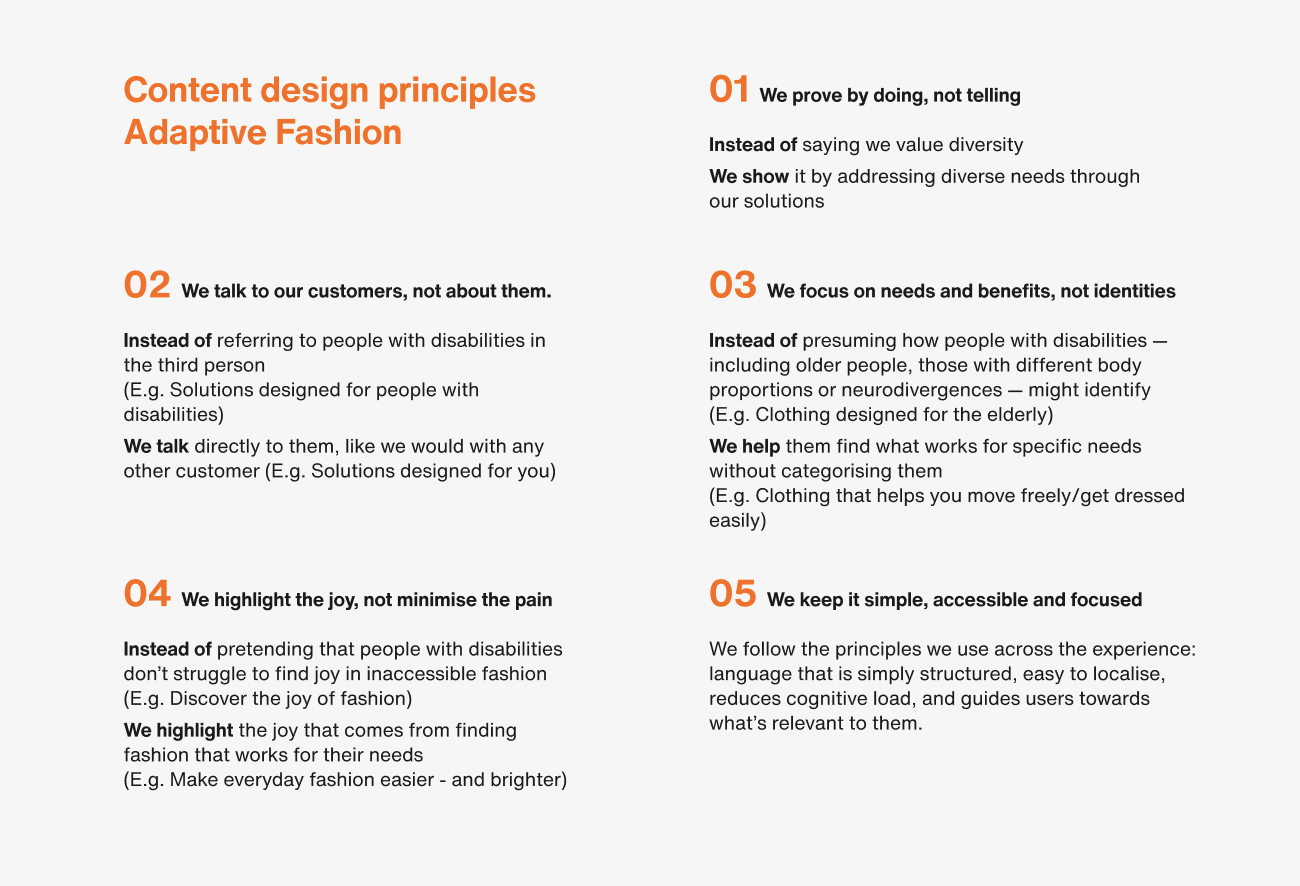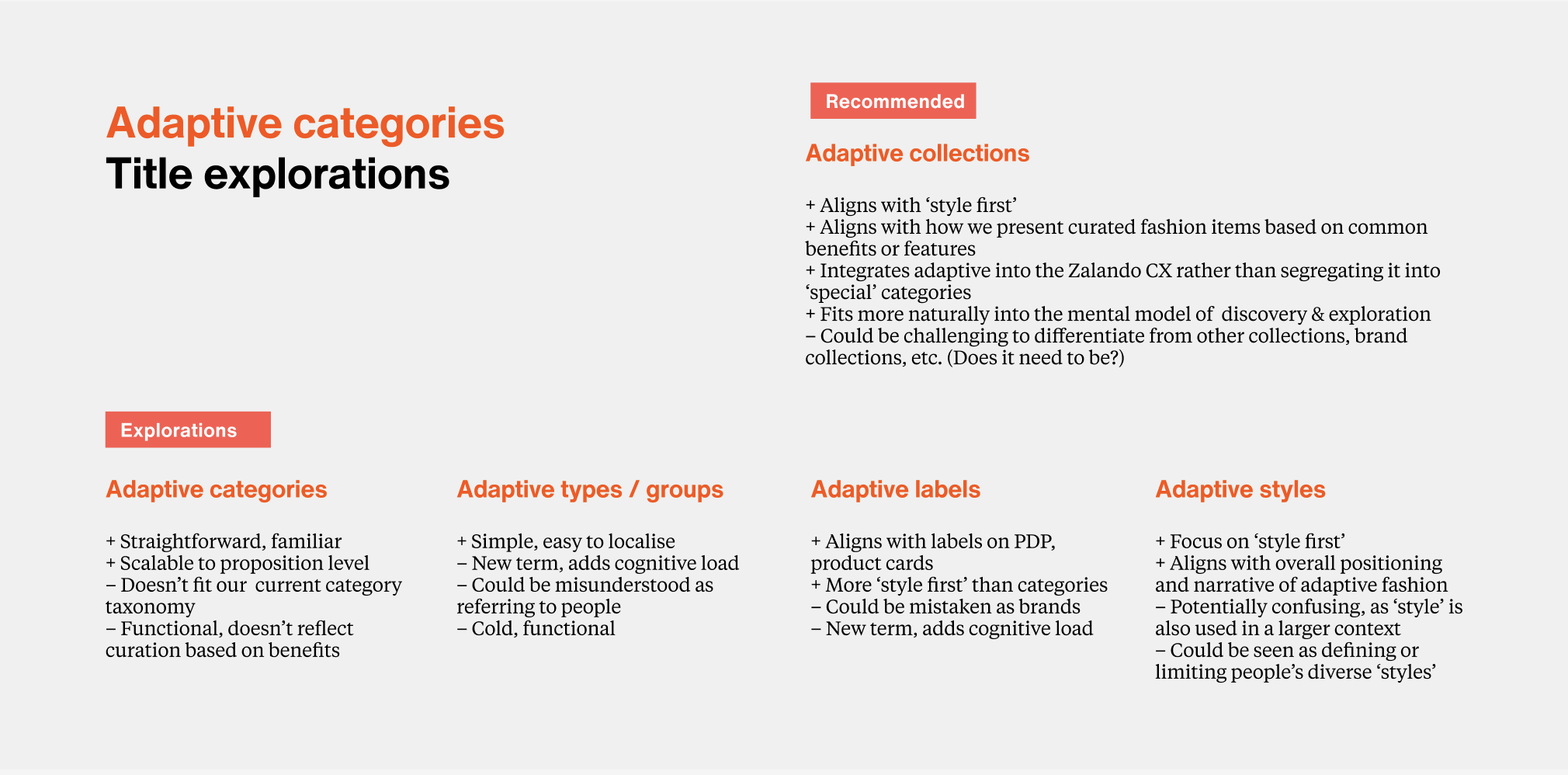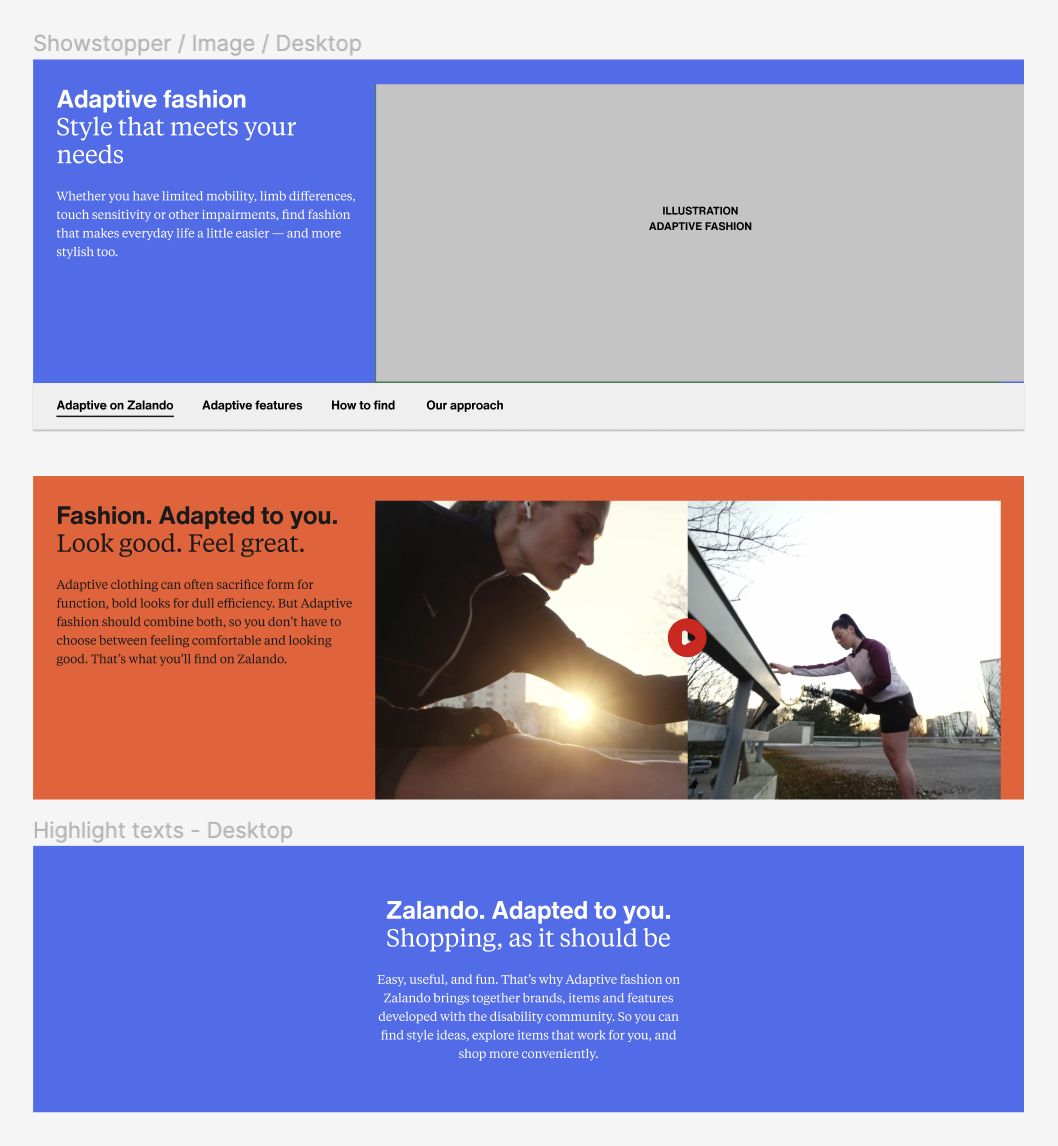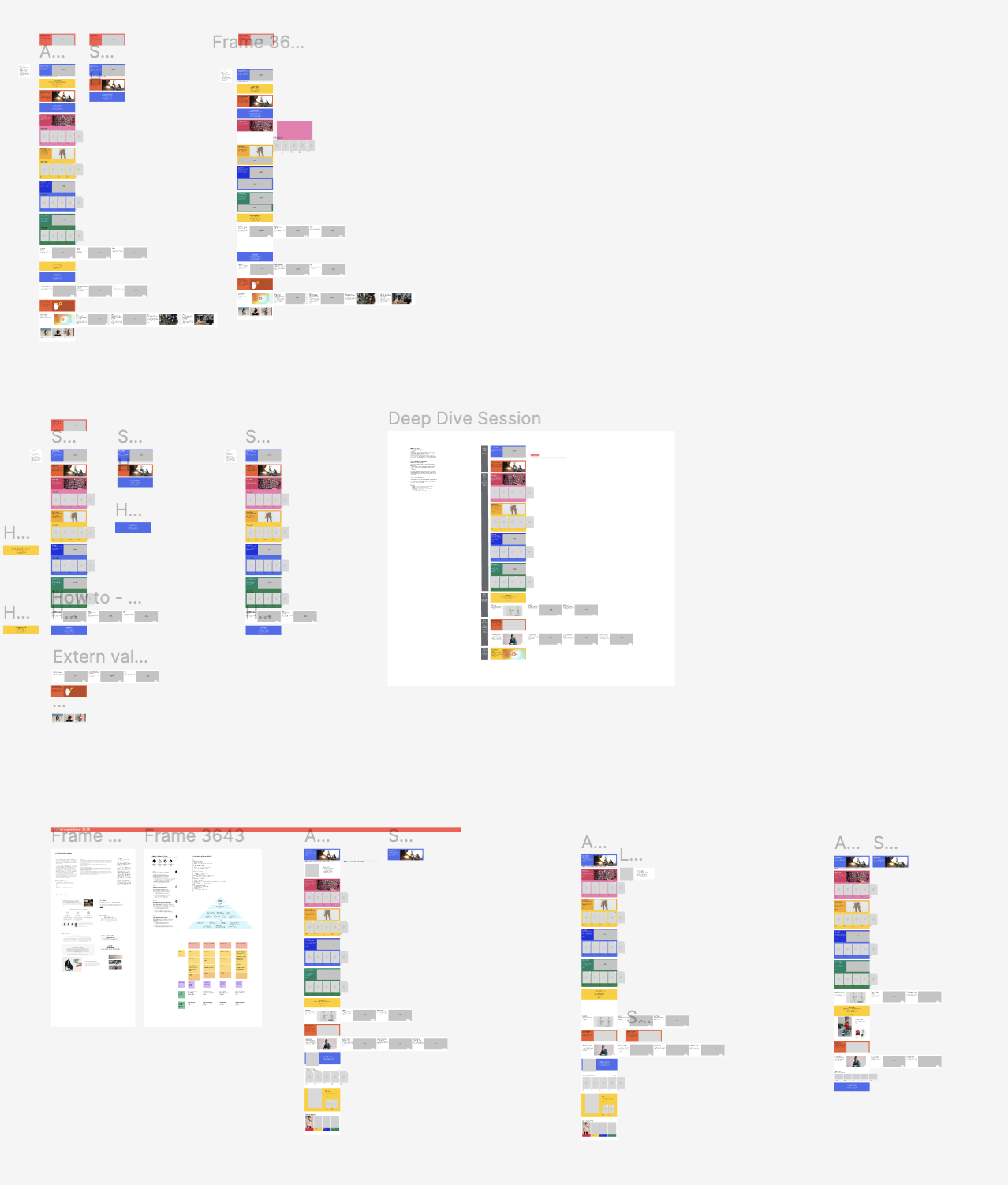Zalando
How to change fashion
In 2023, over 100 million Europeans were living with disabilities or impairments.
With an ageing population, that number is only growing.
And the fashion industry doesn't only ignore them — it actively excludes them.
We had to change this.
Where do we begin?
We started with research: educating ourselves by talking to users, disabled-owned brands and disability inclusion consultants.
We distilled what we learnt into overarching principles to guide us.
And workshopped them across teams, business units and markets to include everyone from step zero.
Building the product narrative
We had to be clear on what we were offering — and why customers should care.
Working with product marketing, I translated features into benefits, defining the proposition.
Talking to people, not around them.
Sometimes, the desire to not offend can lead us to tiptoe around disability, or talk to people at a distance.
I developed comms principles to define how we'd talk to customers.
With respect for their needs, but without treating them as 'special'.
Laying the foundations
A big challenge was to make the experience easy to understand, navigate and scale.
I created a content design system to define information hierarchies, categorisation of content, and clear communication of features and benefits.
Experience design: Integrated but discoverable
In parallel, I partnered with product, design and engineering teams to define user journeys and flows.
We collaborated across departments to modify the global navigation and flows, ensuring that adaptive fashion was integrated but, at the same time, easily discoverable.
Down to the words
After the foundational work, I helped two writers explore ways to structure and craft our words, present to various teams, and iterate with feedback.
We did this until we distilled it down to what customers really needed.
Style first - for all
We began, to be honest, from a state of ignorance — intimidated by the space we were entering.
But our structured approach, user and community collaboration, and constant iteration brought us to a solution we could be proud of.
One that presented fashion as joyful and inclusive, solving everyday problems with style.
Setting others up for success
To help regional teams, I created comprehensive documentation covering everything from our research to concrete guidelines for adapting and localising the experience and communications.
A new benchmark for inclusivity
We launched the first phase of the product in October 2022, and it quickly got us in the news, globally.
'... exceptional example of leadership and commitment to disability inclusion' - TIME magazine
'... game changing movement towards making adaptive products more accessible' - Forbes
More importantly, we received overwhelmingly positive feedback from the disability community, including our partners, creators, and, of course, our customers.


